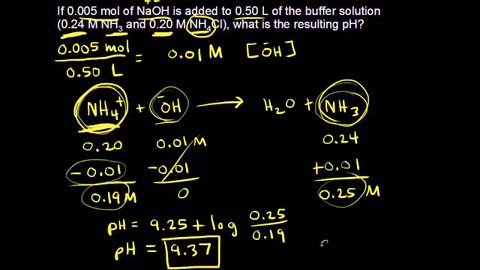緩衝液計算 (Buffer solution calculations)
Wayne Lin 發佈於 2021 年 01 月 14 日  沒有此條件下的單字
沒有此條件下的單字US /ˈprɑbləm/
・
UK /ˈprɒbləm/
- n. (c./u.)問題;難題;數學習題;電腦問題;難搞的人
- adj.問題的
US /ˈwɔtɚ, ˈwɑtɚ/
・
UK /'wɔ:tə(r)/
- n. (u.)水;水域
- v.i.流淚;(嘴)想到好吃的食物而濕潤
- v.t.澆水
- n. (c.)一對;一雙;一對;一雙
- v.t.將(人或物)兩兩配對

